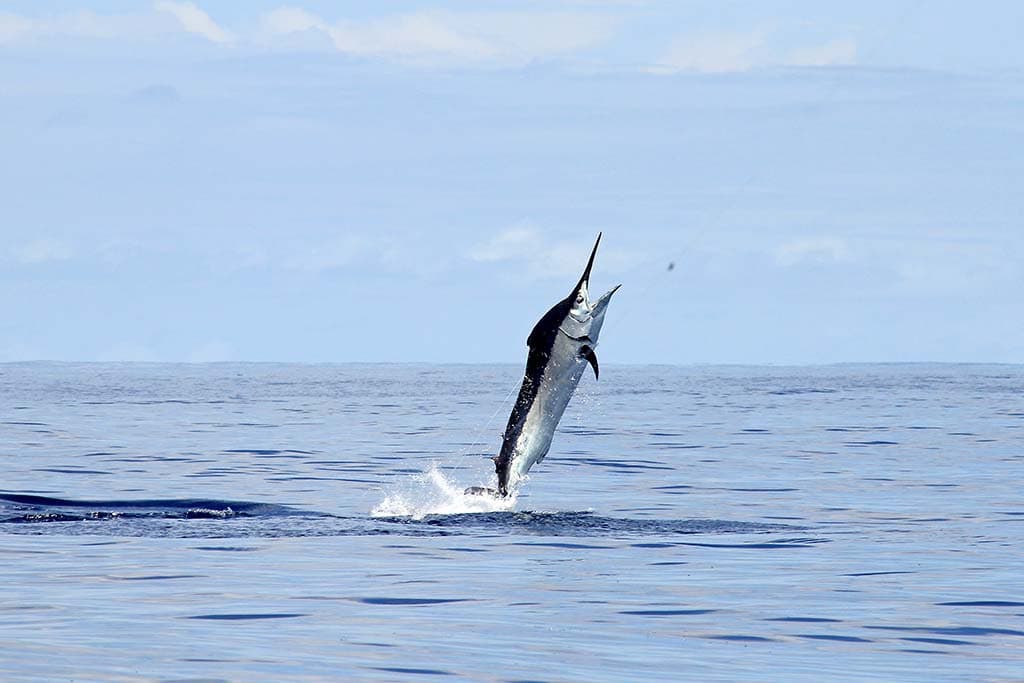Unmasking the Marine Majesty: Differences Between Blue Marlin and Other Marlins
Related reading
Experience the Best Fishing Charters in Brazil at Nervous Marlin
Blog post about fishing charters brazil
Fishing Tourism Brazil: Unforgettable Blue Marlin Adventures in Bahia
Blog post about fishing tourism brazil
Unleash Your Adventure: The Ultimate Guide to Game Fishing in South America
Blog post about game fishing south america
Deep beneath the ocean's surface dwells the majestic Blue Marlin, a favorite target for anglers worldwide. But how does it distinguish itself from other marlins, and why is it such a prized catch? Let's explore the unique attributes of the Blue Marlin compared to its fellow marlin species.
Physical Characteristics and Appearance
The Blue Marlin stands out with its striking cobalt blue coloring on its dorsal side and a silvery white underside, a feature it shares with its cousin, the White Marlin. However, the Blue Marlin is notably larger. Female Blue Marlins can weigh up to four times more than males, with some tipping the scales at an astonishing 1,800 pounds. Its elongated bill and high, bright sail-like dorsal fin are distinguishing features that captivate both seasoned anglers and marine observers alike.
Habitat and Migration Patterns
While marlins are generally oceanic and pelagic fish, Blue Marlins are often found in temperate and tropical waters of the Atlantic and the Pacific Oceans. They prefer warmer temperatures and are known for their extensive migratory patterns, following the warm ocean currents to find prey. This separates them from species like the Black Marlin, which tend to inhabit the Pacific and Indian Oceans and have more localized movement patterns.
Feeding Habits
Blue Marlins are apex predators, primarily feeding on smaller fish such as tuna and squid. They use their sharp bill to slash through schools of fish, stunning their prey before consuming it. Sailfish, another marlin family member renowned for their speed, tend to feed in shallower waters, often targeting surface-dwelling fish, which showcases the diversity in feeding strategies among marlins.
Sportfishing Appeal
Many anglers dream of battling a Blue Marlin due to its size and fighting spirit. Known for their impressive leaps and high stamina, they offer a thrilling challenge for both novice and experienced fishers. Other marlins, like the Striped Marlin, are also popular in sportfishing circles yet tend to be a more common catch in certain regions, making the Blue Marlin's rarity a major draw.
Conservation and Sustainable Fishing
With the decline in marlin populations due to overfishing and habitat destruction, Blue Marlins are now the focus of conservation initiatives. Sustainable fishing practices and catch-and-release programs are critical in preserving these magnificent fish. Being informed about the health of Blue Marlin stocks is essential for anyone looking to engage in ethical fishing activities.
In conclusion, the Blue Marlin's exceptional size, vibrant appearance, and migratory lifestyle set it apart from other marlin species, presenting unique challenges and rewards. If the thought of experiencing an exhilarating Blue Marlin fishing adventure sets your heart racing, consider booking a trip with Nervous Marlin in beautiful Arraial d'Ajuda, Bahia. Here, both anglers and non-anglers can indulge in a myriad of activities, from paragliding to scuba diving, ensuring a memorable marine adventure for all.

